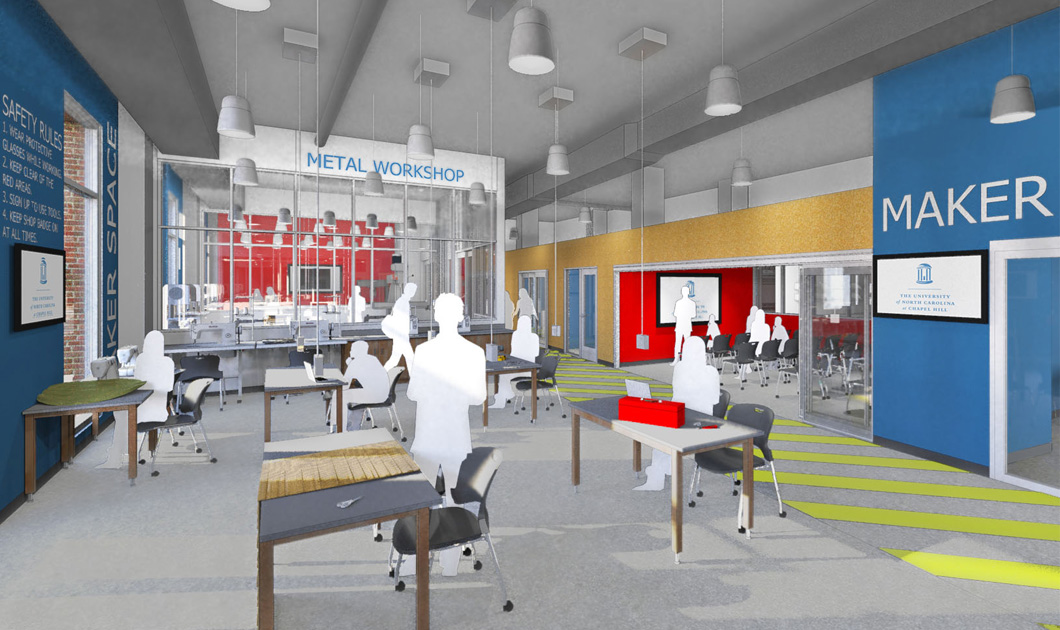
A recent New York Times article, ‘The Innovation Campus: Building Better Ideas: Can architecture spur creativity?’ discussed how schools have gone from building high-end dining commons and luxe workout facilities to innovative, multimillion dollar learning spaces. These spaces often mirror high-tech workplaces, with open work areas and pass-through spaces to foster creative collisions. Here’s the question, though: do they work? Do “innovative spaces” actually foster creativity? Do they improve learning? Do they help prepare better graduates?
The Times indicates there’s little evidence for any of it. And it’s true: the assessment of learning spaces remains an emergent field. But we believe it’s possible to assess outcomes connected to learning spaces; it’s simply a practical matter of going out and doing it.
Part of the challenge of “just doing it” is the myriad of goals learning spaces are expected to meet. Makerspaces, for example, are often expected to meet a wide range of goals, from pragmatic (a space for students to complete class projects), to pedagogical (an active learning, constructivist environment to foster deep learning), to institutional (increased sense of connectedness to the major and retention), to meeting post-graduation goals (working on interdisciplinary teams, fostering 21st century learning skills). There is a multitude of ways to measure these various outcomes. Where to begin?
At Open 2016, the VentureWell annual conference, Wendy Newstetter from Georgia Tech, Lisa Getzler from Lehigh University, Sarah Zappe from Penn State, and Robert Nagel from James Madison University, experts in the assessment of entrepreneurship courses, programs and learning spaces, designed and led a workshop that provides an excellent framework for getting started. Here’s what they advised.
1. Understand your collaborators
Know ahead of time what your collaborators’ goals are. The provost might want the space to improve retention or recruitment while the VP of research wants the space to produce startups. Alumni or industry sponsors may want to see how the space is fostering workplace readiness, e.g., by having students work on interdisciplinary teams. Get a grasp on what everyone wants the outcomes to be before going out and measuring them.
2. Define the objectives
This may feel intimidating, but doesn’t have to be. Take a look at the description or mission you’ve developed for your space and use that as a starting point. Consider which tools and other supplies are available in your space and the kinds of activities they foster. From there you can articulate who uses the space and the kinds of projects and learnings the space supports.
3. Leverage what you’ve got
Processes developed for assessing entrepreneurship and design classes can also be leveraged in assessing your space. Seek out classes that have objectives in common with your space and adopt the techniques used in assessing those classes, e.g., using rubrics to review project notebooks.
4. Consider the time and resources available
The specific approach to assessment you adopt will ultimately be influenced by the time, resources and expertise you can allocate to the project. Low hanging fruit and a useful first step is to collect metrics to demonstrate who uses the space and when. A login process or swipe card access is one very simple approach. Simple counts, e.g., from logs of tool usage and use of consumables, can similarly provide evidence of how the space is used. If you have additional resources and the necessary expertise, consider using indirect measures like existing survey instruments that measure entrepreneurial self-efficacy, or the development of custom interview protocols. Finally, if you’re fortunate to have an ethnographer on your team, observational and interview techniques can be leveraged to better understand the community and culture of the space, e.g.,, are women and minorities comfortable there?
With so many potential objectives and possible ways to measure them, it’s easy to become overwhelmed. But don’t get stymied: jump in, pick one objective and get started. To see where that first step in assessing your space can take you, take a look at this 2015 ASEE conference article.